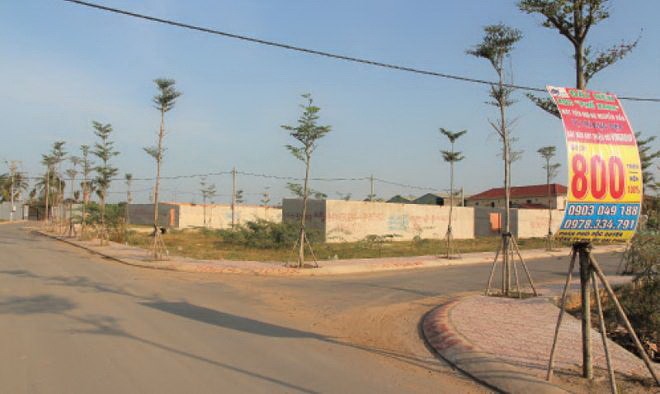 Economy
Economy

Owners of land plots who want to divide them for eventual sale have been waiting for months to hear from officials since a new regulation on land division took effect a year ago in HCM City.
 |
| Land plots for sale on Nguyễn Xiển Street in District 9. — VNA/VNS Photo Mạnh Linh |
HCM CITY — Owners of land plots who want to divide them for eventual sale have been waiting for months to hear from officials since a new regulation on land division took effect a year ago in HCM City.
Because of the delays, the market for land sales was quiet for the first two months of the year, a stark contrast to the same period last year.
Nguyễn Văn Hậu, general director of Asian Holding Joint-Stock Company, said the applications for land division had not been resolved because of a lack of guidelines from authorities.
“We have two applications for land division in areas permitted by the regulation, but the official asked us to wait for further direction from agencies,” Hậu said.
Nguyễn Toàn Thắng, director of the Department of Natural Resources and Environment, said it would review the regulation.
The eastern area of HCM City, which is usually the busiest area for land sales, has seen a serious decline in applications from owners to divide their land plots for sale, while the western and southern areas, other than the existing Long Hậu land plot project, has also seen a dramatic decline in transactions.
In Cần Giờ District, only land transactions related to farmland have occurred.
Nguyễn Văn Dũng, director of Thăng Long Real Estate Co, said there were few land plot transactions in the city’s western area.
“Last year, the market was busy because of licenses for new projects and new information about residential projects. But the situation has been different this year,” he said.
Lawyer Trần Đức Phượng of the HCM City Bar Association said that guidance for implementation of the regulation falls under the purview of many agencies such as the Department of Planning and Architecture, Department of Construction and HCM City Electricity of Việt Nam, creating confusion among the public.
He said that division of land plots for sale or for non-sale transfer to family members should be considered the same under the regulation, unless there is some kind of violation.
“Some people divide their land into smaller plots to give to their children or to sell, while enterprises divide their land plots for sale. Both should receive approval,” he said.
The city People’s Committee has asked the Department of Natural Resources and Environment to review the regulation and report to the city government about any changes that need to be made to the regulation.
Regulations
The new land division regulation was issued in late 2017, which allowed large plots of land to be divided into smaller plots, including plots that had been part of delayed plans that had yet to be implemented. The new regulation took effect on January 1, 2018.
Under the new regulation, called Decision 60, the criteria for the area and minimum width of divided land plots varies, depending on three zones.
For zone 1 (inner city), including districts 1, 3, 4, 5, 6, 8, 10, 11, Gò Vấp, Bình Thạnh, Phú Nhuận, Tân Bình and Tân Phú, the divided land plots must each have a minimum area of 36 sq.m and width of at least three metres long.
For Zone 2, (districts experiencing rapid urbanisation), including districts 2, 7, 9, 12, Bình Tân and Thủ Đức, the divided land plots must each have a minimum area of 50 sq.m and width of at least four metres long.
For Zone 3 (outlying districts), including districts Bình Chánh, Củ Chi, Hóc Môn, Nhà Bè and Cần Giờ, the land plots must have a minimum area of 80 sq.m and width of at least five metres.
In addition, the new regulation on land division requires a minimum area of 500 sq m for a plot of farmland with annual crops, and at least 1,000 sq.m for farmland used for industrial plants, aquaculture and salt-marsh. — VNS




